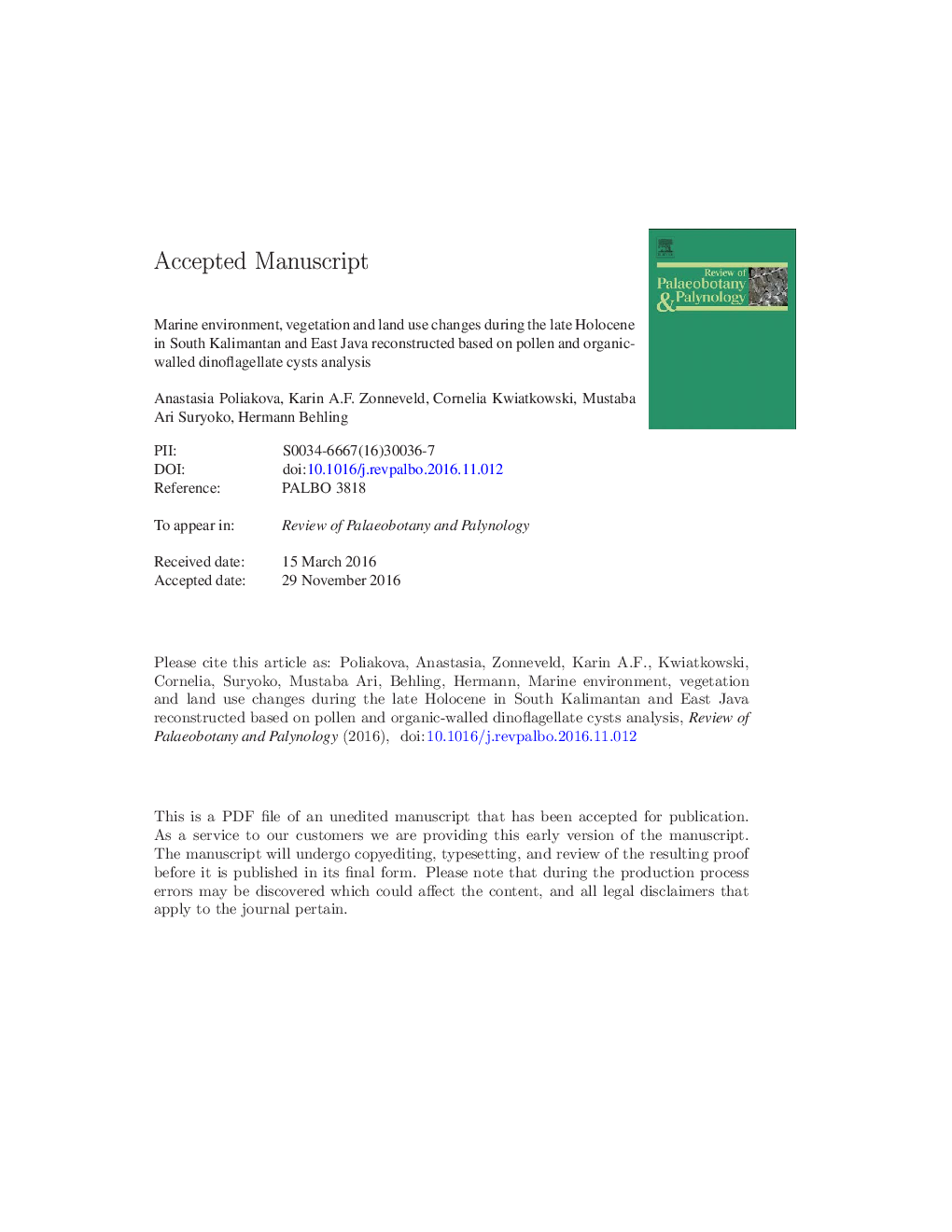| Article ID | Journal | Published Year | Pages | File Type |
|---|---|---|---|---|
| 5788404 | Review of Palaeobotany and Palynology | 2017 | 47 Pages |
Abstract
The pollen, spore and organic-walled dinoflagellate cyst associations of two marine sediment cores from the Java Sea off the mouths of Jelai River (S Kalimantan) and Solo River (E Java) reflect environment and vegetation changes for the last ca 3500 years. A decline in primary forest taxa (e.g. Agathis, Allophylus, Dacrycarpus, Dacrydium, Dipterocarpaceae, Phyllocladus and Podocarpus) suggest that the major change in vegetation is caused by forest canopy disturbance possibly as a consequence of human activity. The successive increase in pollen of pioneer tress/shrubs and herb taxa (e.g. Acalypha, Ficus, Macaranga/Mallotus, Trema, Pandanus) indicate the development of secondary vegetation. In Java these changes started much earlier (ca at 2950 cal yr BP) than in Kalimantan (ca at 910 cal yr BP) and seem to be more severe. Changes in the marine realm, reflected by the dinoflagellate cyst association, correspond to the changes in vegetation on land. They reflect a gradual change from relatively well ventilated to more hypoxic bottom/pore water conditions in a more eutrophic environment. Near the coast of Java, the shift of the water trophic status took place between ca 820 and 500 cal yr BP, while near the coast of Kalimantan it occurred as late as at the beginning of the 20th century. We observe an increasing amount of the cysts of Polykrikos schwartzii, P. kofoidii, Lingulodinium machaerophorum, Nematosphaeropsis labyrinthus and Selenopemphix nephroides at times of secondary vegetation development on land, suggesting that human induced terrestrial changes possibly affected the marine environment as well, most likely through increased eutrophication and pollution.
Related Topics
Physical Sciences and Engineering
Earth and Planetary Sciences
Palaeontology
Authors
Anastasia Poliakova, Karin A.F. Zonneveld, Cornelia Kwiatkowski, Mustaba Ari Suryoko, Hermann Behling,
